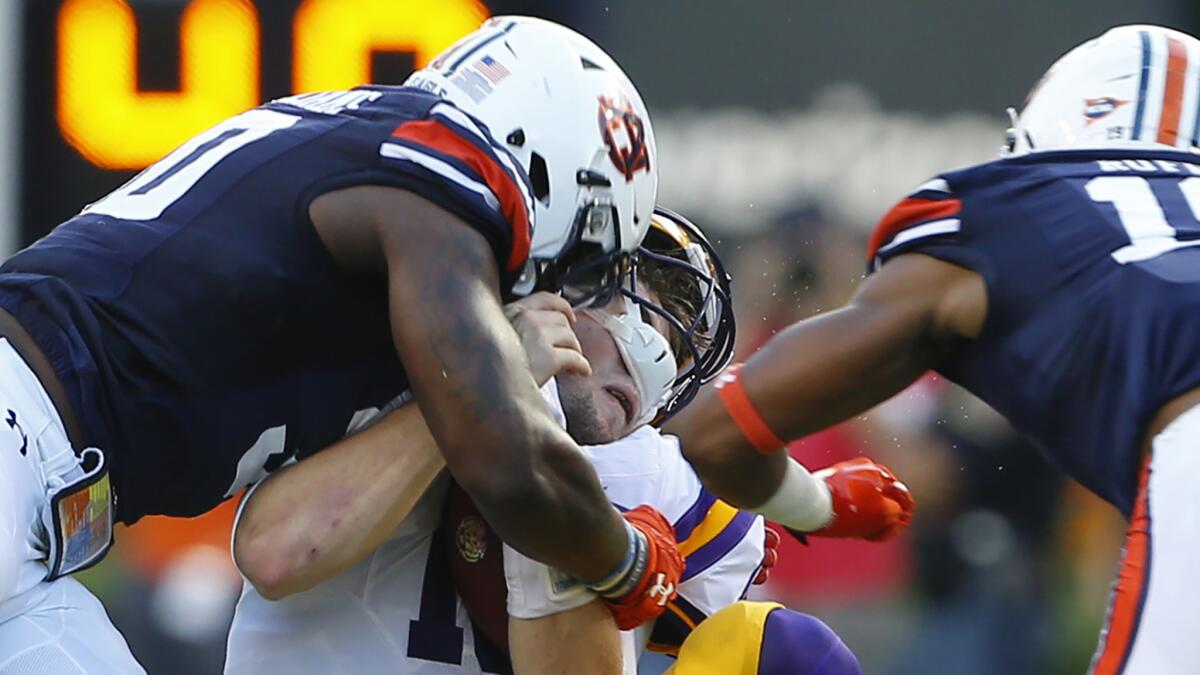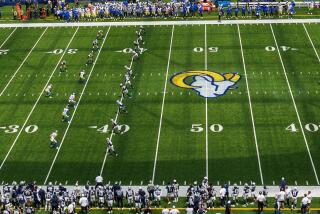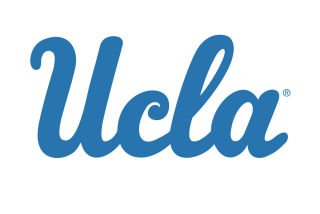NCAA clarifies targeting rule, helmet hits and the role of replay officials

With college football heading into a Saturday full of marquee games, it remains to be seen how officials will react to new clarifications regarding this season’s targeting rules.
The interpretations were issued by the NCAA on Friday afternoon following a weeklong debate that, in large part, focused on a play from the recent Stanford-UCLA game.
The NCAA’s football rules committee said it wants to be sure officials across the country understand what constitutes forcible contact with the “crown” of the helmet.
“It seems that some officials have been interpreting the crown of the helmet to mean the tip-top portion of the helmet only,” said Rogers Redding, the association’s football secretary-rules editor. “We want everyone to understand that the crown of the helmet starts from the area above the face mask to the dome of the helmet.”
Last week at the Rose Bowl, UCLA defensive back Tahaan Goodman delivered a helmet-to-helmet hit that forced Stanford receiver Francis Owusu to leave the game with a concussion. Officials on the field and in the replay booth did not call a penalty.
Stanford Coach David Shaw later expressed his concern about the play, saying: “If you lead with your helmet on another player’s helmet, it should be a penalty. I don’t know why that’s disputed.”
On Wednesday, the Pac-12 Conference supported the decision, stating that “contact was with the front of the helmet and not the crown (top) of the helmet.”
It would now appear that, given Friday’s statement from the NCAA, the hit should have been a foul.
The second clarification reemphasized a new rule that allows replay officials to stop the game if they suspect an egregious targeting penalty was overlooked on the field.
“There have been some instances where this rule could’ve been applied for targeting fouls,” Redding said. “We want to provide more guidance so that this rule is applied more consistently.”
More to Read
Go beyond the scoreboard
Get the latest on L.A.'s teams in the daily Sports Report newsletter.
You may occasionally receive promotional content from the Los Angeles Times.











